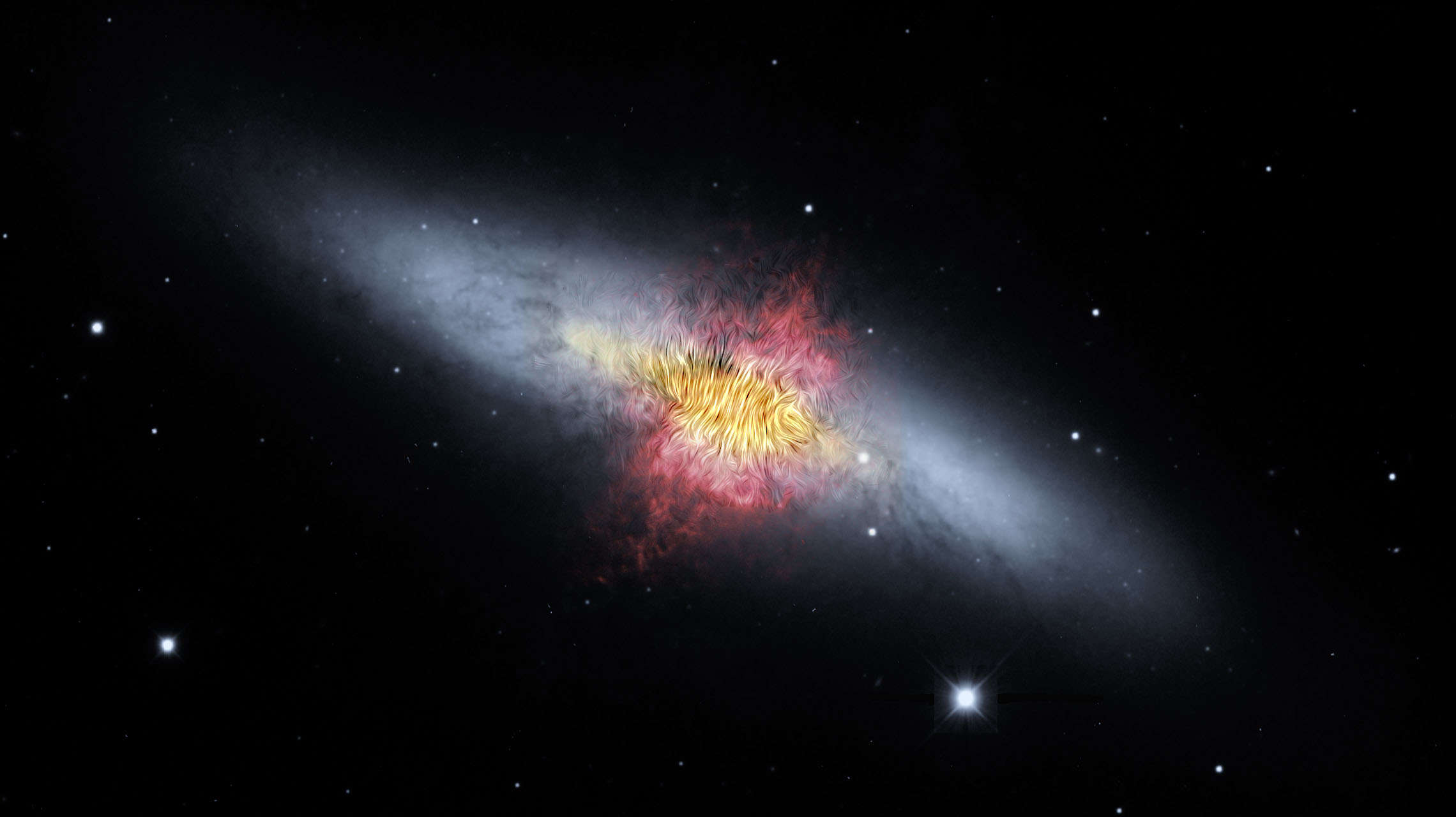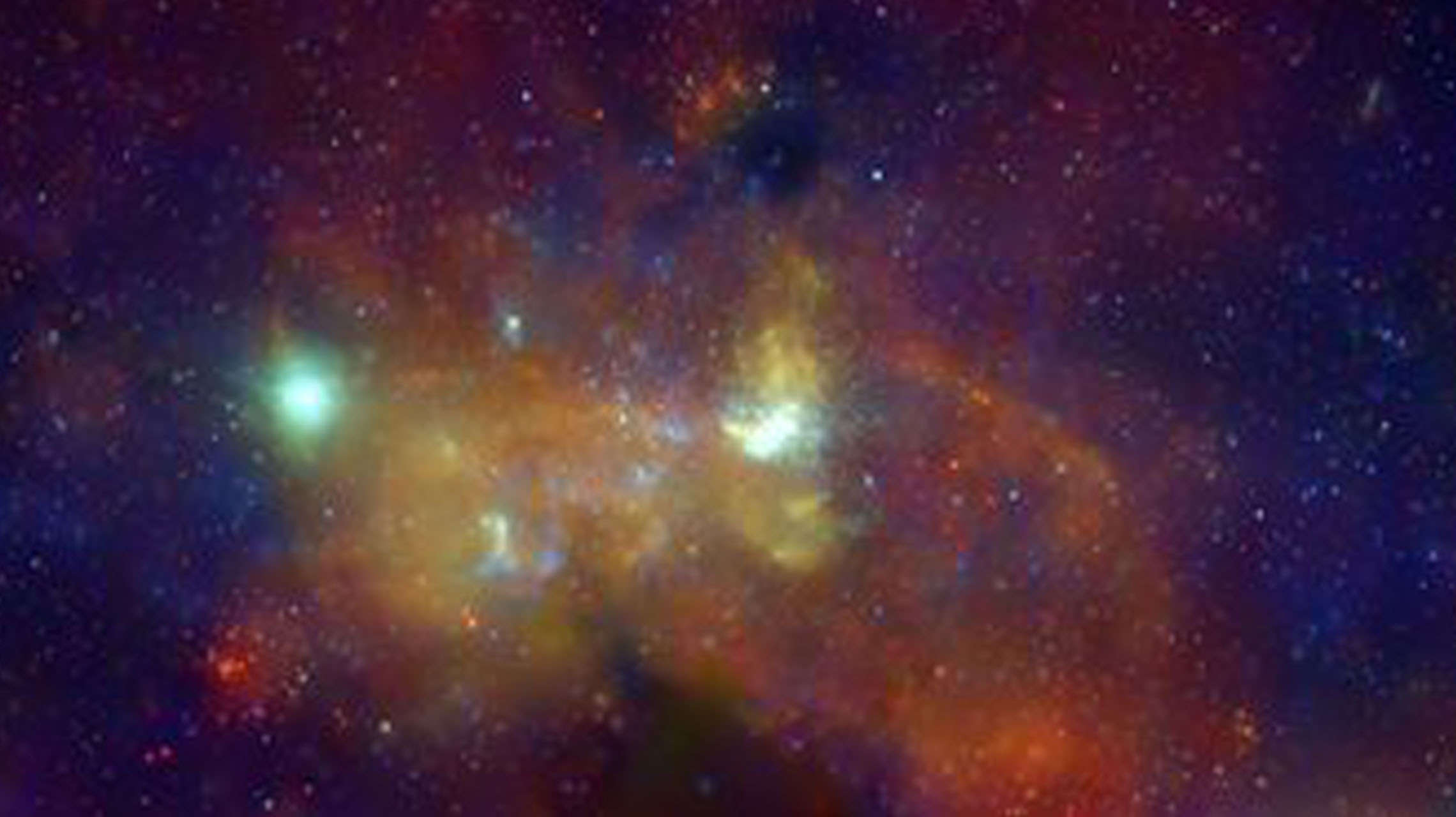Create a free profile to get unlimited access to exclusive videos, sweepstakes, and more!
Supermassive black hole storms rage, and scientists just found the earliest one ever

Turbulence, wind, dangerous radiation… it sounds like a dreadful storm forecast. You shouldn't expect anything less frightening from a supermassive black hole.
Galactic winds that erupt from black holes blast furiously through space. Supermassive black holes in active galactic nuclei (AGNs), or high dense regions in the center of a galaxy, unleash these winds because of ultra-high levels of energy from both matter that accumulates in their accretion discs and the galactic jets they spew out. Now scientists who observed over 100 stormy black holes have found that galactic winds have been blowing almost as long as the universe has existed.
Astrophysicist Takuma Izumi and his research team, who used the Subaru Telescope and the Atacama Large Millimeter/submillimeter Array (ALMA), recently published a study in The Astrophysical Journal.
"Accreting matter forms a dense disc around the black hole," Izumi told SYFY WIRE. "The velocity of the motion in that disk is quite fast, which causes strong friction among particles. This friction is the source of the heat of the disc, hence the powerful radiation from the AGN, which can push around surrounding matter, which then launches outflows or galactic winds."
What Izumi wanted to find out was when the first galactic winds in the universe emerged, and the recent find puts the origins of this phenomenon at 13 billion years ago, at least a billion years after the Big Bang. Something peculiar about supermassive black holes is that their masses are proportional to the masses of their galactic cores, despite the enormous difference in size. The central bulge of a galaxy is about 10 orders of magnitude larger than its nuclear black hole, which seems to imply that there was some sort of physical interaction — possibly with the magnetic field — that could have forced them to evolve together.
To find out the mass of the galactic bulge, Izumi needed to separate quiet gas (which follows the motion of the galaxy) from the superfast particles streaming out of the black hole in the outflow. He and his team then made a dynamic model for quiet gas motion, designing it to align with the observed velocity.
"Since our model includes 'rotation motion' as a parameter, we can immediately obtain rotation pattern and 'rotation curve'," he said. "With the information of 'radius vs rotation velocity', we can compute the enclosed mass inside a given radius."
Such a coevolution was suspected before in the Cigar Galaxy, or M82 (above). Its loss of matter is thought to be the result of its galactic wind, which aligns with a magnetic field out up to 60 million Suns’ worth of gas and dust. M82 is also a starburst galaxy, meaning it is constantly forming stars. Its galactic wind can explain how star-forming materials travel through the void.
Whether or not magnetic fields evolved with interactions between galaxies and their black holes, galactic winds almost definitely are. Supermassive black holes have enough gravitational force to draw nearly unfathomable amounts of matter into the death spirals that are their accretion discs. This much gravity makes matter move at incredibly high speeds that result in energy emissions so intense that they can actually shove that matter outward, creating a galactic wind.
"The correlation found in the local universe indicates that there should be unusual mechanism that causes black holes and galaxies to interact," Izumi said. "The tight correlation between the mass of supermassive black holes and the masses of their host galaxies is mysteirous because the typical size of a black hole is totally different form the size of the galaxy."
How fast are galactic winds? The Subaru Telescope caught the windborne gases of one faraway galaxy (J123+0100) moving at around 310 miles per second, and that is still nothing compared to the 2 million miles per second that the fastest known galactic wind in the universe zooms around at. Going back to galaxy J123+0100, Izumi’s team saw that the the mass ratio of its bulge to its supermassive black hole was just about the same as the ratios seen in younger galaxies that grew up much later.
J123+0100 is the oldest of the galaxies observed and convinced the researchers that galactic winds must have been around for over 13 billion years. Its bulge is about 30 billion times more massive than the Sun, and its black hole is approximately 1% of that or 10 million solar masses. If proof of an even older galactic wind can be found, around 13.77 billion years in age, it could mean that galaxies and supermassive black holes were coevolving from the dawn of the universe.
Izumi and his team will be continuing research into the innards of our galaxy, and it could reveal borderline sci-fi things.
"We will need to more seriously consider the interaction of black holes and galaxies," he said. "Many astronomers focus either on the galaxy evolution or black hole evolution in the early universe, but
if there is indeed a co-evolution, we should study both, as they are highly interacting, to obtain a comprehensive understanding on the evolution of this universe."
This really makes winds strong enough to turn your umbrella inside out seem like a balmy breeze in paradise.















